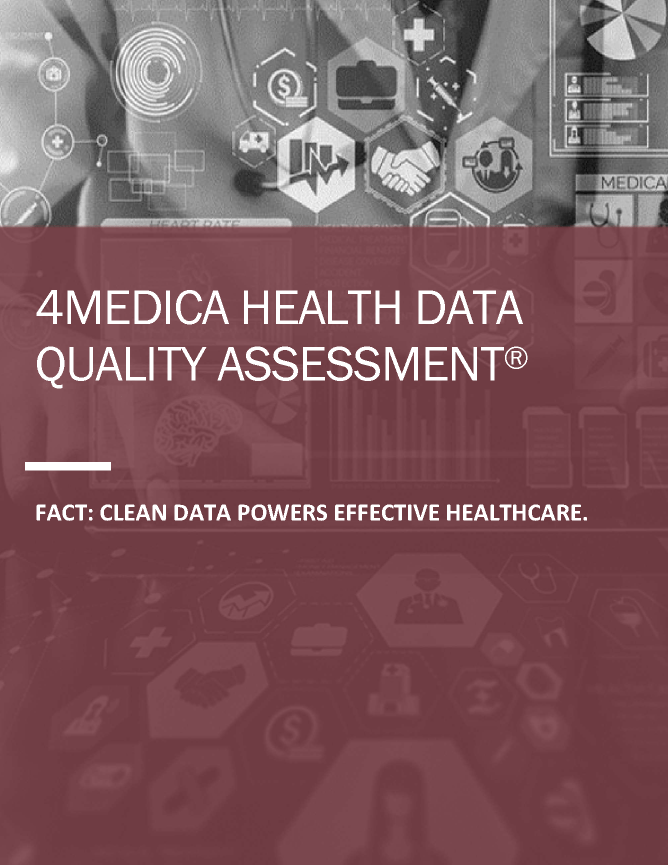Many factors in healthcare can impact patient safety, including the competence of clinicians and their support staff, the condition of facilities and equipment, the level of teamwork and collaboration, the ability of clinicians to communicate with their patients, and the use of monitoring technology.
While many of the above factors are monitored by medical boards, state and federal certification organizations, and even patients on social media, patient safety also is heavily tied to the quality of data used to make clinical decisions—an important but well-hidden variable. And the quality of patient data largely depends on how accurately patients are identified. Poorly identified patients are one of the main causes of safety issues in healthcare.

When the patient is not properly identified, multiple problems arise. One is that a patient’s record is duplicated in a healthcare organization’s master patient index (MPI). An even bigger issue occurs when duplications and other patient identity errors span disparate environments. A patient may see two or three doctors, with each of these clinicians using different laboratories. Far too often, these records are incomplete because they don’t include every test the patient has undergone.
As a result of duplicate records, a doctor making decisions may have information from one lab while having no idea whether the patient has had tests conducted at other labs. They only see a sliver of the patient’s records and have no visibility into diagnostic trends that could inform their clinical decisions. This type of care gap could result in patient harm, according to a study by the University of Texas School of Biomedical Informatics.
Even more dangerous are “overlays.” These happen when one patient’s records end up in another patient’s chart. In this case, a clinician treating a patient isn’t simply working with an incomplete patient record—they unknowingly have the wrong medical information entirely! Overlays can lead to bad patient outcomes and significant litigation.
Lab data quality impacts care
Seventy percent of clinical decisions are made based on lab results, according to the Centers for Disease Control and Prevention (CDC). It stands to reason, then, that high-quality data should be a priority in labs. Yet duplicate patient records, overlays, and other patient identification issues in labs are among the worst problems in healthcare because workers do so much manual data entry. The inevitable result is low data quality, which impacts both the ability of providers to engage in evidence-based decision-making and a lab’s financial performance.
When lab data is of such low quality that it essentially is mud, it not only hurts those labs, but also undermines value-based care initiatives that rely on improving outcomes and reducing costs. Conversely, labs that ensure a high level of quality by dramatically reducing and even eliminating duplicate patient records and overlays can transform their mud into gold.
Labs that clean up their data will increase the value of their most important assets and create more business opportunities. Pharmaceutical companies, public health organizations, and artificial intelligence (AI) startups have a great need for quality lab data sets to advance research and enable sound public health policy decisions. These secondary uses of data represent potential new revenue streams for labs.
Data cleanup through identity management can enable laboratories to significantly decrease claim denials, especially when low duplication rates are combined with eligibility checking. Patient collections efficiency is also improved with clean data, since a single statement can be sent to a patient, instead of the confusion caused when each encounter generates a separate bill.
Patient engagement is another goal for today’s labs. A patient health record app provided by a laboratory drives improved collections, better patient service center scheduling and workflow, as well as improved patient satisfaction by also making test results accessible. However, such apps are only meaningful when a patient has a single identity within the lab’s database. Duplicated patient identities result in confusion, as patients will only see some of their test results or bills for services.
Advantages of intelligent automation
Labs need high data quality to remain competitive and enable better clinical decisions. But health data quality should be a priority for all healthcare organizations, including hospitals, health information exchanges, health information networks, integrated delivery networks, health plans, accountable care organizations, and private practices.
Failure to reduce duplicate records can hurt healthcare organizations clinically and financially. A hospital in Texas found that 22% of its patient records were duplicates, according to the Healthcare Financial Management Association. “In 4 percent of cases involving confirmed duplicate records, clinical care was affected,” wrote Katherine Lusk, former health information management director at Children’s Medical Center Dallas. “Emergency department treatment and surgeries were delayed and duplicate tests ordered.”
Duplicates also cost Children’s Dallas nearly $100 on average per duplicate patient record, excluding the cost of staff time to correct the information. The cost of repeat tests and delayed treatments was about $1,100 per record, Lusk wrote, while bad debt was linked to nearly 11% of duplicate records.
The good news is that technology can help all healthcare stakeholders improve their health data quality. Advances in AI and machine learning now make it possible for automation technology to reduce human intervention—and error—in the patient-matching process. A multilayered process might start by running data through an MPI to identify and merge obvious duplicate patient records. A second layer could utilize machine learning to correct detected errors in patient data. Referential matching and data enrichment then could be deployed to further reduce duplication.
Once this automated process is complete, data analytics could resolve remaining duplicates and check for overlays. The previous steps could be rerun as another quality measure. At this point, humans could address any unresolved questions regarding specific patient records.
Better data quality pays off
As you might expect, utilizing intelligent automation to improve health data quality produces better results in a fraction of the time it would take for humans to perform the same tasks. By reducing duplicate records and overlays, labs, hospitals, and other healthcare organizations can significantly improve their data quality, increasing the chances that clinicians have all the information to provide the safest care for their patients. Turning healthcare data mud into gold pays off for everyone.
This article was originally written by Dr. Oleg Bess and published by Patient Safety and Quality Healthcare (PSQH). Click here to see article
Stay In Touch:
| Thank you for Signing Up |


Stay In Touch:
| Thank you for Signing Up |



